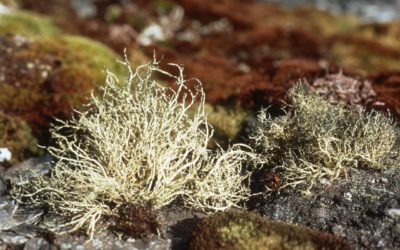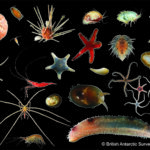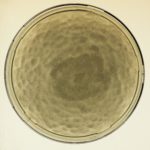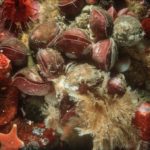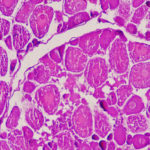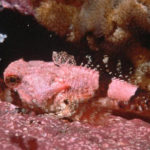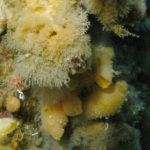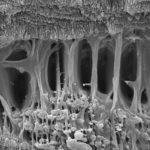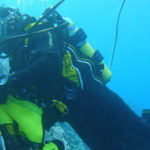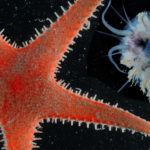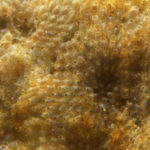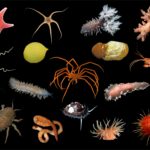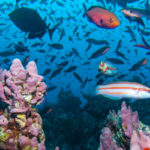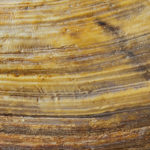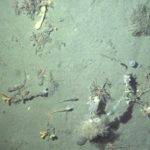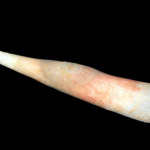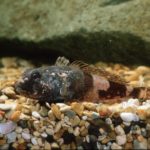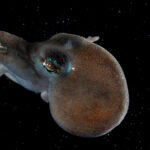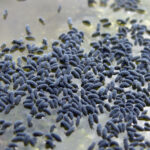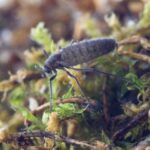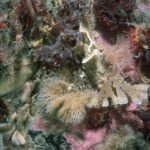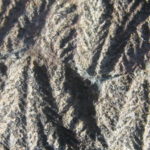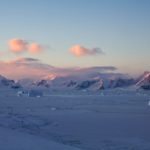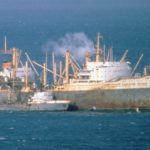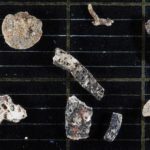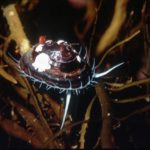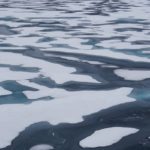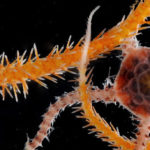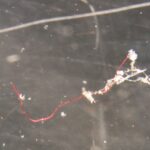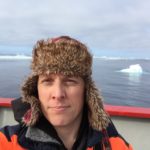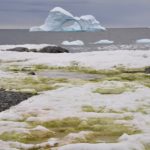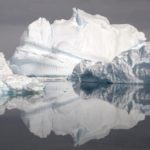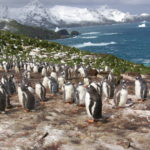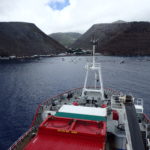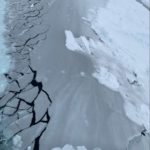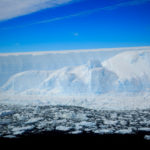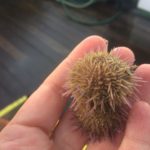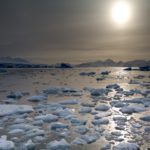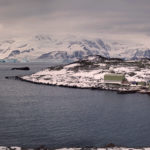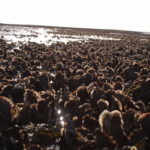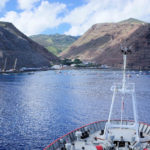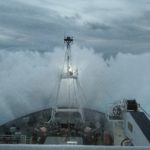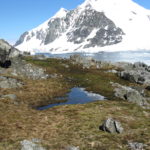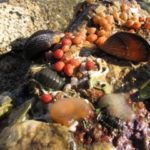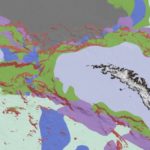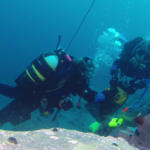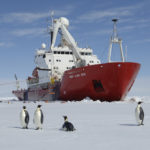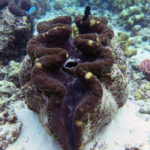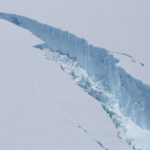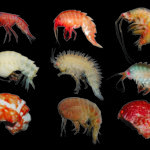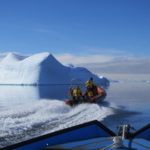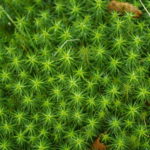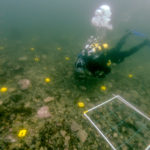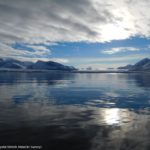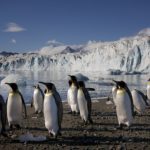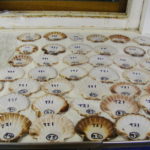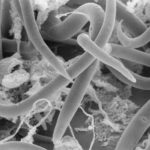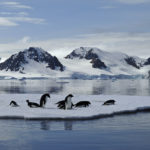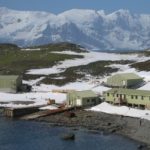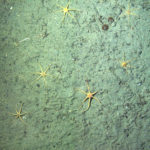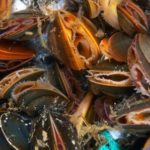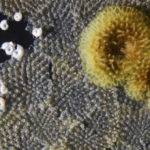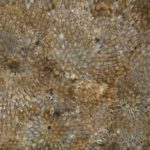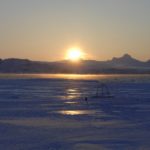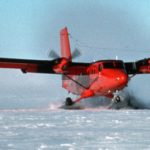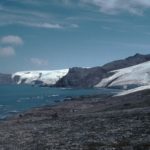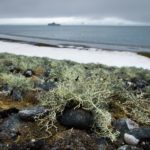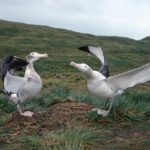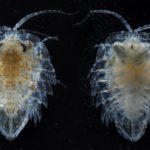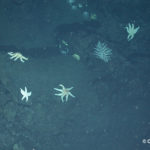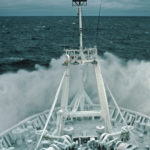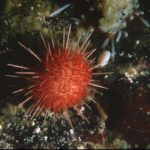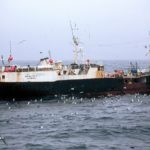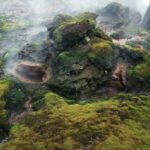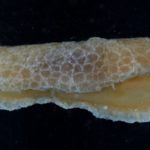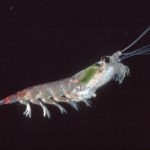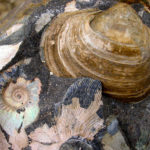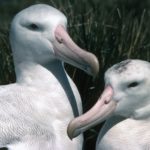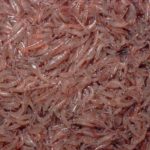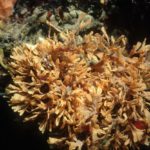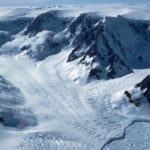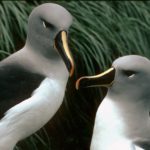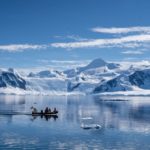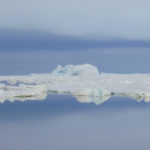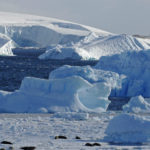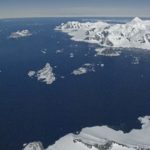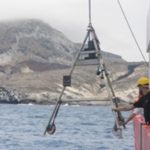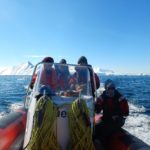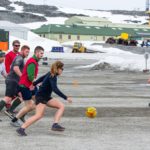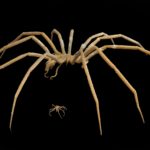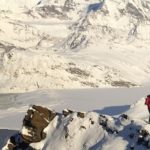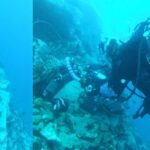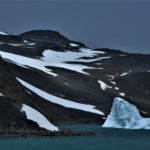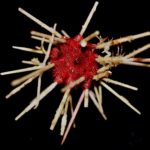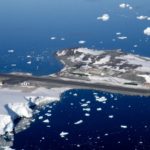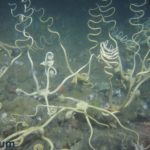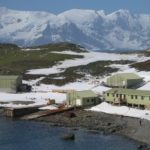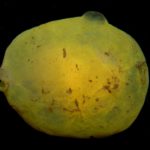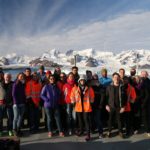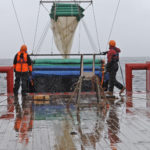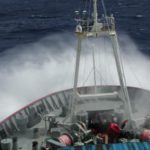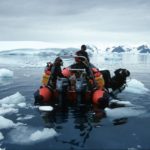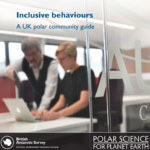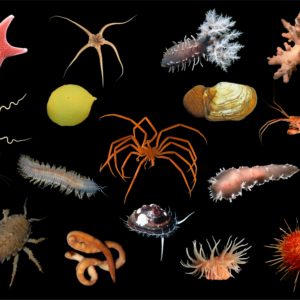Biodiversity, Evolution and Adaptation team
Our ambition
Is to understand how past, present and future environmental change has and will affect polar biodiversity both on land and in the ocean, and how life adapts to extreme polar conditions. Our research outcomes will provide deep insight into the impact of environmental change on the natural world, make a strong contribution to future conservation measures, and generate new and innovative areas of research that have potential societal benefits.

Our team has two research groups, Biodiversity and Adaptations. The Biodiversity group focuses its investigations on mapping species distributions, how they relate to current and past environments and how this information can be used to predict future distributions under environmental change. The Adaptations group investigates adaptations to extreme polar conditions, from the molecular level through physiology to ecology and, using experimental approaches, how these may affect species abilities to adapt under future change scenarios. Both groups work together towards the same aim: to develop a holistic picture of future patterns of biodiversity in a changing world.
Team priorities
Science
Biodiversity
- Patterns in biodiversity. Revealing the distribution of life in Polar Regions, from microscopic to global scales, to discover the critical environmental and biological drivers that shaped those patterns.
- Responses to historical and environmental change. Understanding current distributions of animals, plants and microbes can help us to constrain models of past environmental conditions. Studying how life at the poles has survived extreme environmental change in the past will help us to predict how it will react to future changes.
- Species and ecosystem functions and interactions in Polar Regions. This is mainly a terrestrial project that manipulates and models the network of interactions between soil microrganisms to understand how polar food webs work.
- Assessing human impacts. Human interactions with the biodiversity of the Polar Regions have the potential for serious negative impacts including pollution, habitat destruction, invasive species and over-exploitation. Surveying, monitoring and assessing key or vulnerable species and habitats allows us to inform policy makers responsible for resource management and environmental protection.
Adaptations
- Impacts of life in the cold. To understand how life has adapted to extreme Polar conditions we study the similarities and differences between species living at the Poles and those at lower latitudes from genetic, cellular and ecological perspectives.
- Species resilience to environmental change. Discovering how organisms react and respond to changing environmental conditions, and how their polar adaptations could be an advantage or disadvantage in a warming world.
- Calcification processes. Understanding how skeletons, especially shells, are produced by marine species (polar and European), and how this impacts their abilities to adapt under future climate change, informs how this knowledge can be used for societal gain for instance in future aquaculture and biomimicry exploitation.
- Biomolecules from polar organisms. We will identify and develop novel chemicals used by organisms in extreme environments for their potential use for innovative applications in industry and society.
Technology, innovation and training
- Use molecular (gene), biochemical and cellular technologies to understand physiological and ecological processes affect resilience/sensitivity to climate change.
- Use morphological and molecular (phylogeographic) technologies in taxonomy and phylogeny.
- Use and develop databases and mapping software to reveal patterns in biodiversity and predict future range changes.
- Use a range of advanced marine technology, including heated settlement plates for marine colonisation studies and new high definition video and photographic systems for mapping seafloor biodiversity.
- Continued strong commitment to post graduate training through NERC Doctoral Training Partnerships and other direct UK and international collaborations.
Influencing and leading international programmes
- Scientific Committee on Antarctic Research (SCAR) scientific research programmes State of the Antarctic Ecosystem (AntEco) and Antarctic Thresholds – Ecosystem Resilience and Adaptation (AnT-ERA); steering group of proposed Antarctic Terrestrial and Nearshore Observing System (ANTOS); SCAR Development Council
- International biodiversity data initiatives including: biodiversity.aq (the Antarctic biodiversity information system), the Global Biodiversity Information System (GBIF) and the Ocean Biogeographic Information System (OBIS)
- Participation in a series of meetings and workshops contributing to Marine Protected Areas in the Southern Ocean, and to the development of Antarctic Biodiversity and Conservation Strategies.Contribution to the Southern Ocean Observing System (SOOS), Commission for the Conservation of Antarctic Marine Living Resources (CCAMLR), the United Nations Environment Programme World Conservation Monitoring Centre (UNEP-WCMC), the United Nations World Ocean Assessment, the Inter-governmental Panels on Climate Change and Biodiversity and Ecosystem Services (IPCC, IPBES), the Genomic Observatories Network and the European Marine Biological Research Centres (EMBRC).
Stakeholder engagement
- Provide expert advice and support to the UK Foreign and Commonwealth Office Polar Regions Department, Joint Nature Conservation Committee, and All Party Parliamentary Groups on Biodiversity and the Overseas Territories.
- Support the Antarctic Treaty System by provision of research and expert advice on environmental change.
- Publicising and explaining our scientific advances through the BAS Communications Team.
Public engagement
- Disseminate our findings, published in the highest-impact journals, through presentations in leading national and international forums.
- Participate in BAS media and public engagement programmes through the print, broadcast and online opportunities, and support and develop our early career scientists in their public engagement activities.
- Enthuse the next generation of Antarctic explorers & scientists through outreach activities such as the Cambridge Science Festival, Lyme Regis Fossil festival, Manchester science festival public talks and school visits.
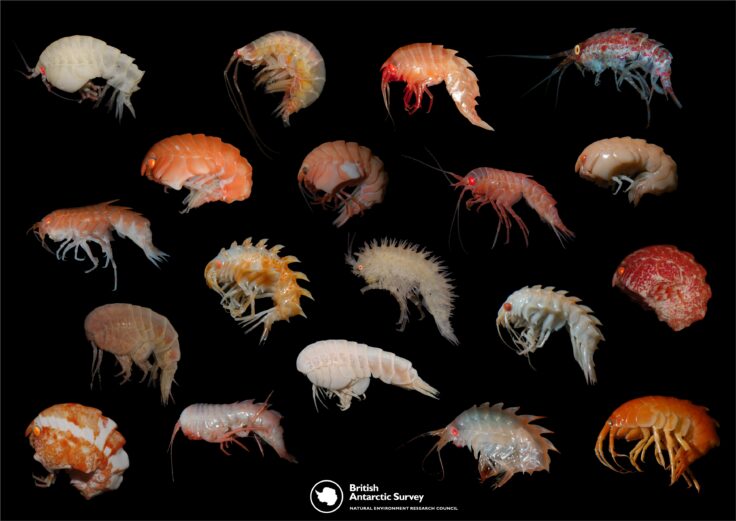
Using an Antarctic fungus as a wintertime biopesticide
Can a fungus from an Antarctic soil be used to control weevil larvae causing damage to UK soft fruits and forestry? The larvae of weevils, which overwinter in soil and …Biodiversity at BAS Cambridge
Biodiversity@BAS is an initiative formed by BAS staff. Adopting current NERC Biodiversity policy and working closely with BAS Estates and Environment Office teams, its goal is to assist with the …Skeleton structure, size, predation and climate change
How do the skeletons of marine animals change with habitat and environmental conditions? External skeletons, in the form of calcium carbonate shells are found predominantly in molluscs and brachiopods (marine …Reproduction in a changing world
Reproductive capacity and success of marine animalsDynamic Live Cell Imaging
Dynamic live cell imaging at sub-zero temperatures How do Antarctic marine organisms, such as fish, manage to thrive at temperatures below 0°C? How do their cells and in particular, their …Monitoring climate change in action
Long term science We know that our world is changing due to human influence. But how is it changing? Some areas, such as the Antarctic Peninsula, are changing more rapidly …Cold Skeletons
Does the cold affect how animals grow? Are skeletons different in Antarctic marine species, which survive almost permanently below 0°C? It is well known that animals grow at different rates …Changing biodiversity
Baseline study to monitor how marine biodiversity will respond to climate changeSO-AntEco
The South Orkney Islands is a small archipelago located in the Southern Ocean, 375 miles north-east of the tip of the Antarctic Peninsula. The seafloor around the South Orkney Islands …The Heated Settlement Panels
How will life and biodiversity on Earth will respond to climate change? This information is particularly urgent for the waters along the Antarctic Peninsula, which are experiencing rapid regional climate …EMBRC
European Marine Biological Resource CentreAscension Island Marine Sustainability (AIMS)
The project Ascension Island Marine Sustainability (AIMS) – A Fisheries and Marine Biodiversity Project Ascension Island harbours globally important marine biodiversity, potentially representing a unique assemblage of western and eastern …CACHE-ITN
Pushing forward our understanding of calcium production in the marine environmentSIOS
Svalbard Integrated Earth Observing System (SIOS) is an international infrastructure project. There are 26 partners from Europe and Asia involved. The essential objective is to establish better coordinated services for …ASCCC
The ASCCC Project has been funded by ACE (Antarctic Circumnavigation Expedition) to investigate, quantify and understand the role of polar and subpolar seabeds in the carbon cycle, particularly in response …New deep-sea mollusc species co-habits with anemone
3 December, 2024
A new species of tusk shell, a burrowing marine mollusc, has been discovered in deep, North Atlantic waters by scientists from British Antarctic Survey and the Senckenberg Society for Nature …
New project to unlock life’s secrets in extreme cold
2 September, 2024
Cambridge researchers are set to explore the uncharted depths of life in the extreme cold, with findings that could reshape our understanding of biology and pave the way for future …
First Antarctic-wide survey of plant life to aid conservation efforts
6 August, 2024
The first continent-wide mapping study of plant life across Antarctica reveals growth in previously uncharted areas, and is set to inform conservation measures across the region. Published today in Nature …
Octopus DNA solves mystery of ice sheet’s past
22 December, 2023
Scientists, including from British Antarctic Survey, have used octopus DNA to discover that the West Antarctic Ice Sheet (WAIS) likely collapsed during the Last Interglacial period around 120,000 years ago …
DNA Detectives: New ways to spot Southern Ocean hitchhikers
10 July, 2023
How do you spot an invader you can’t see in a harsh and unforgiving environment? A team of international scientists are looking for new methods to defend the frozen continent …
Invading insects transforming Antarctic soils
9 May, 2023
A tiny flightless midge which has colonised Antarctica’s Signy Island is driving fundamental changes to the island’s soil ecosystem. Research by experts at the British Antarctic Survey (BAS) in collaboration …
Tackling climate change and biodiversity loss together
21 April, 2023
Climate, biodiversity, and societal challenges are intrinsically linked and yet are usually viewed in isolation. A new review study, published in the journal Science this week (21st April 2023), focusses …
Warming and acidification threatens organisms
30 November, 2022
Global warming and ocean acidification are threatening marine organisms, such as corals, bryozoans, molluscs, sea urchins or crustaceans, that build their skeletons and shells with calcium carbonate (chalk) according to …
Learning about the first animals from life at the poles
12 October, 2022
The amazing survival strategies of polar marine creatures might help to explain how the first animals on Earth could have evolved earlier than the oldest fossils suggest according to new …
Polar medals awarded to BAS staff
31 January, 2022
Three British Antarctic Survey (BAS) staff have been awarded the Polar Medal. The announcement was published last week (Friday 28 January) in the London Gazette. Melody Clark is a molecular …
Invasive species ‘hitchhiking’ on ships threaten Antarctica’s unique ecosystems
10 January, 2022
Marine life hitching a ride on ocean-crossing ships poses a threat to Antarctica’s pristine ecosystems, with the potential for invasive species to arrive from almost anywhere across the globe, say …
Abundance of life discovered beneath an Antarctic ice shelf
20 December, 2021
Far beneath the ice shelves of the Antarctic, there is more marine life than expected, finds a recent study in the journal Current Biology, published this week (20 December 2021). …
Chaotic formation of genetic islands among marine molluscs
14 September, 2021
New research by scientists at British Antarctic Survey and Bielefeld University explains how the chaotic formation of genetic islands can occur in marine molluscs. Usually, the individuals of a population …
World’s experts report on tackling biodiversity and climate change
10 June, 2021
A workshop report published today (10 June) by 50 of the world’s leading biodiversity and climate experts states that unprecedented changes in climate and biodiversity, driven by human activities, have …
Discovery of life beneath Antarctica’s ice shelves
15 February, 2021
Far underneath the ice shelves of the Antarctic, there’s more life than expected, finds a recent study in the journal Frontiers in Marine Science, published this week (15 February 2021). …
Celebrating International Day of Women & Girls in Science 2021
11 February, 2021
Today is International Day of Women and Girls in Science (11 February), a celebration of women and girls in science led by UNESCO and UN-Women. “International Day of Women and …
Expedition to map biodiversity in Atlantic deep sea
8 January, 2021
A British Antarctic Survey (BAS) scientist departs Germany today (8 January 2021) onboard the research vessel SONNE to study the diversity of marine organisms in the Atlantic deep sea. Dr …
Microplastics ‘abundant’ in remote polar seas
23 October, 2020
New study of plastics in the Antarctic Peninsula, South Georgia and the Sandwich Islands
Dr Huw Griffiths awarded SCAR Medal for Education and Communication
7 August, 2020
Please join us in congratulating Dr Huw Griffiths, Marine Biogeographer at British Antarctic Survey, who has been awarded the Scientific Committee on Antarctic Research (SCAR) Medal for Education and Communication. …
Climate change will turn coastal Antarctica green
20 May, 2020
Scientists have created the first ever large-scale map of microscopic algae as they bloomed across the surface of snow along the Antarctic Peninsula coast. Results indicate that this ‘green snow’ is …
Underwater Mountain Mapped in the South Atlantic
9 April, 2020
An underwater mountain double the height of the UK’s Ben Nevis has been added to a global map of the seafloor during a research cruise to investigate the marine environment …
Invading species ‘hitches a ride’ on kelp to reach Antarctica
31 January, 2020
Large brown seaweed can bring invasive species to Antarctica, according to research published today (31 January 2020) in the journal Scientific Reports. The new study describes the first scientific evidence …
Studies highlight fragility of Antarctic ecosystems
29 November, 2019
Two studies published in a special issue of the journal Science Advances this week (27 November 2019) highlight the fragility of the Antarctic and its ecosystems in the lead up …
Seal and penguin poo is major driver of Antarctic terrestrial biodiversity
13 May, 2019
A new study by BAS scientists and collaborators in the Netherlands shows that seal and penguin poo is key to Antarctic biodiversity on land. By studying concentrations of nitrogen-rich guano …
Marine research expedition sets sail for the South Atlantic
12 March, 2019
A team of scientists set sail this week (12 March) for the remote South Atlantic islands of Tristan da Cunha and St Helena. This mission is part of BAS’ commitment …
Expedition to Larsen C ice shelf thwarted by sea ice
11 March, 2019
Sea-ice conditions have prevented the Research Icebreaker Polarstern from reaching the Larsen Ice Shelf and the calving areas of iceberg A68.
Expedition heads to newly exposed Antarctic ecosystem
4 February, 2019
An international team of scientists heads to Antarctica this week (4 February 2019) to investigate a mysterious marine ecosystem that’s been hidden beneath an Antarctic ice shelf for up to …
Parents help offspring adapt to climate change
30 January, 2019
Some parents in the animal kingdom can prepare their young for environmental change, helping them cope better in new conditions, a paper published today in Nature Scientific Reports reveals. Scientists …
New study looks at risk to Antarctic marine life in future
17 January, 2019
A new study of the animals living in polar oceans reveals which are most at risk from climate change. The study is published today (17 January) in Frontiers in Marine …
The impact of ‘alien’ species in Antarctica
19 December, 2018
Of the known non-native or ‘alien’ species found in Antarctica, a non-biting species of midge currently presents one of the highest risks to terrestrial ecosystems, researchers have found. The preliminary …
Endangered native oyster helped by invasive species
9 October, 2018
The presence of invasive oysters can support an endangered native oyster species in certain situations, a team led by a British Antarctic Survey scientist has found. The result was a …
Increase in plastics reaching remote South Atlantic Islands
8 October, 2018
The amount of plastic washing up onto the shores of remote South Atlantic islands is 10 times greater than it was a decade ago, according to new research published today …
Fungi respire millennium-old carbon from Antarctic soil
30 May, 2018
Fungi in Antarctic soils release carbon that is more than a thousand years old, a team led by scientists at the British Antarctic Survey (BAS) has found. This discovery sheds light on how carbon is released into the atmosphere as polar regions warm.
Brachiopods resilient to past environmental change
14 March, 2018
A new study concludes that a seafloor dwelling marine invertebrate is more resilient to environmental change than expected. The paper, led by researchers at British Antarctic Survey, is published today …
Marine habitat maps important for Antarctica’s biodiversity
19 February, 2018
The UK government is committed to the long-term protection of over four million km2 of the world oceans which fall within the UK’s Overseas Territories. Prioritising which parts of the …
Blue mussel shape is a powerful indicator for environmental change
13 February, 2018
Temperature, salinity and food supply are key influences on the shape of common blue mussels (Mytilus spp.), reveals a new study involving scientists from British Antarctic Survey. The research is …
First expedition to newly exposed Antarctic ecosystem
12 February, 2018
A team of scientists, led by British Antarctic Survey (BAS), heads to Antarctica this week (14 February) to investigate a mysterious marine ecosystem that’s been hidden beneath an Antarctic ice …
Life in the slow lane
19 January, 2018
A new study from British Antarctic Survey shows how five common Antarctic marine invertebrates (animals without a backbone) use less energy to feed, grow and reproduce than their temperate and …
Scientists to visit hidden Antarctic ecosystem after giant iceberg calving
9 October, 2017
A team of scientists, led by British Antarctic Survey (BAS), is planning an urgent mission to investigate a mysterious marine ecosystem that’s been hidden beneath an Antarctic ice shelf for …
Marine snails know how to budget their housing costs
22 September, 2017
For nearly 50 years, researchers have been stumped as to why sea shells from warm tropical waters are comparatively larger than their cold water relatives. New research, led by the …
Special protection for area exposed by Larsen C iceberg
19 September, 2017
An international agreement is now in place to give special protection to the area of ocean left exposed when one of the largest icebergs ever recorded broke free from the …
More losers than winners for Southern Ocean marine life
4 September, 2017
A new study of the marine invertebrates living in the seas around Antarctica reveals there will be more ‘losers’ than ‘winners’ over the next century as the Antarctic seafloor warms. …
Antarctic marine life may grow faster in a warming world
31 August, 2017
A team of scientists has discovered that a 1°C rise in local sea temperature has massive impacts on an Antarctic marine community. These new results are published this week (31 …
New study explains moss migration across the globe
19 July, 2017
A new study on mosses found in the polar regions reveals when and how often they have migrated across the Equator. Mosses are the dominant flora in Antarctica, yet little is known of …
How much carbon can polar seafloor ecosystems store?
26 June, 2017
One of the best-known impacts of climate change is the loss of sea ice in the Arctic, but also in parts of the Antarctic: the poles are increasingly turning from …
Plastic pollution in the Antarctic worse than expected
19 June, 2017
The levels of microplastic particles accumulating in the Antarctic are much worse than expected, a team of experts has warned. The continent is considered to be a pristine wilderness compared …
Poor outlook for Antarctic biodiversity
28 March, 2017
An international study involving scientists from British Antarctic Survey (BAS) has debunked the popular view that Antarctica and the Southern Ocean are in a much better environmental shape than the …
New study on how shellfish create their shells
8 February, 2017
A new study describing how shellfish create their shells in response to their environment is published today (Wednesday 8 February) in the journal Royal Society Open Science. The shells of …
Study of roundworm that returns to life after freezing
20 January, 2017
The first molecular study of an organism able to survive intracellular freezing (freezing within its cells) is published this week by British Antarctic Survey (BAS), in collaboration with researchers from …
FEATURED PAPER: Icebergs and blue carbon
17 November, 2016
When divers laid a grid of 225 markers on the seabed it started one of the longest marine disturbance experiments anywhere in the world. Surveyed and replaced annually, they show …
New study puts shells under spotlight
11 November, 2016
A new study on how molluscs build their shells in the sub-zero waters of Antarctica is published today (Friday 11 November) in the journal Scientific Reports. A team of European …
Polar ecologist prepares for the ice – Blog no. 1
3 October, 2016
New blog from ecologist Jes Bartlett who’s heading to spend the summer working at Signy Island Research station. Here she talks about preparing cargo in her blog: The Cargo Deadline …
Subantarctic seabed creatures and past climate
1 September, 2016
A new marine biodiversity study in one of the largest Marine Protected Areas in the world reveals the impact of environmental change on subantarctic seabed animals and answers big questions …
Shellfish study published this month
27 June, 2016
New technologies and techniques used in a scientific study of the shells of oysters, mussels, clams and scallops reveal clues about how these commercially valuable species may fare in a changing world, and how discarded shells from the aquaculture industry could benefit the environment.
FEATURED PAPER: Battling bryozoans
13 June, 2016
This paper shows that, contrary to long-held ideas, the intensity of competition (density of direct, physical spatial contests) differs little with latitude. However, the severity of competition (contests with a …
NEWS STORY: Fighting for space on the seabed
26 April, 2016
New research highlights differences between the tropics and the poles Rivalry between species is common the world over as animals fight for territory and resources such as food. But, according …
On the ice opportunity for PhD students and Early Career Researchers
7 April, 2016
16 PhD students and Early Career Researchers have a unique opportunity to gain practical skills for working safely and effectively in the polar regions.
PRESS RELEASE: New season – ambitious science
23 November, 2015
New season tackles ambitious science and logistical challenges The British Antarctic Survey (BAS) 2015/16 field season is underway with dozens of scientists and support staff – together with planes and tonnes …
NEWS STORY: Changes in seabed communities
16 November, 2015
A new study by an international team of scientists, including from British Antarctic Survey (BAS), has analysed the effects on seabed communities of glacial retreat. Writing in Science Advances this …
PRESS RELEASE: Fungal diversity in Antarctic soils
28 September, 2015
Warmer temperatures stimulate diversity of soil fungi Remote and covered by ice for much of the year the Antarctic Peninsula is home to hidden and dynamic communities of microbes that …
NEWS STORY: Antarctic life is highly diverse
13 July, 2015
Antarctica more diverse and biologically rich than previously thought The team of scientists, led by Monash University, along with colleagues from the British Antarctic Survey, University of Waikato in New …
NEWS STORY: Antarctic biodiversity highlighted
24 June, 2015
Antarctic life – highly diverse, unusually structured A new assessment by scientists, published in Nature this week, suggests Antarctica is a more diverse and biologically rich region than previously thought. …
NEWS STORY: New starfish identified
29 April, 2015
First new family of starfish discovered in hydrothermal vents A new family of deep-sea starfish has been discovered living in the warm waters around a hydrothermal vent in the East …
PRESS RELEASE: Oceans and biofouling
28 January, 2015
Ocean acidification changes balance of biofouling communities A new study of marine organisms that make up the ‘biofouling community’ — tiny creatures that attach themselves to ships’ hulls and rocks …
PRESS RELEASE: Sea urchins adapt
10 December, 2014
Sea urchins from Antarctica show adaptation to ocean acidification A study of sea urchins from the Antarctic Peninsula has revealed an ability to adapt to changing conditions such as rising …
NEWS STORY: Patagonian toothfish fishery
16 September, 2014
South Georgia Patagonian toothfish fishery recertified with flying colours Following its five-yearly Marine Stewardship Council (MSC) assessment, the South Georgia Patagonian toothfish longline fishery has, for the third time, been …
NEWS STORY: New critter discovered on whale carcass
22 April, 2014
Chance discovery could be unique to whale bone habitat A new species of bug, similar in appearance to the common woodlouse, has been found plastered all over a whale carcass …
NEWS STORY: Understanding how ecosystems function
18 March, 2014
Lessons from a remote Antarctic island on the vulnerability of ecosystems Scientists have carried out new research that could change the way we think about the vulnerability of ecosystems. Published …
NEWS STORY: Volcanoes helped life survive ice ages
10 March, 2014
New research suggests that life survived past ice ages with the help of volcanoes. An international collaboration, including scientists from the British Antarctic Survey, has found new evidence that the …
NEWS STORY: Climate change effects on shellfish
9 December, 2013
BAS takes the lead in ambitious science programme to aid fishing industry and monitor effects of climate change on Europe’s shellfish The supply of shellfish we buy at the supermarket …
NEWS STORY: New marine species identified
3 December, 2013
New species recovered from Amundsen Sea More than thirty new, and, as yet unclassified, species of marine life were discovered during a science expedition to the Amundsen Sea off Pine …
NEWS STORY: Understanding food webs
13 September, 2013
Research on the dynamics of food webs The dynamics of food webs, networks of who-eats-whom interactions, are being highlighted in the August report of International Innovation, an open access European …
NEWS STORY: More moss growing in Antarctica
29 August, 2013
Moss growth in Antarctica linked to climate change Increases in temperature on the Antarctic Peninsula during the latter part of the 20th century were accompanied by an acceleration in moss …
PRESS RELEASE: Krill risk from warming seas
21 August, 2013
Warming Antarctic seas likely to impact on krill habitats Antarctic krill are usually less than 6 cm in length but their size belies the major role they play in sustaining …
PRESS RELEASE: Lake drill mission called off
27 December, 2012
Antarctic lake mission called off In the early hours of Christmas Day (Tuesday 25 December 2012) Professor Martin Siegert, Principal Investigator of the Subglacial Lake Ellsworth experiment, confirmed that the …
PRESS RELEASE: Shellfish and changing oceans
5 August, 2012
New study helps predict impact of ocean acidification on shellfish An international study to understand and predict the likely impact of ocean acidification on shellfish and other marine organisms living …
PRESS RELEASE: Breeding habits of albatrosses
30 April, 2012
Antarctic albatross displays shift in breeding habits A new study of the wandering albatross – one of the largest birds on Earth – has shown that some of the birds …
‘Lost world’ discovered around Antarctic vents
4 January, 2012
Communities of species previously unknown to science have been discovered on the seafloor near Antarctica, clustered in the hot, dark environment surrounding hydrothermal vents. The discoveries, made by teams led …
PRESS RELEASE: Critical food supply level
22 December, 2011
New research shows how much food is needed by seabirds An international group of scientists has shown that many seabirds begin to suffer when the food available for them in …
PRESS RELEASE: How marine animals crossed continent
31 August, 2010
Marine animals suggest evidence for a trans-Antarctic seaway A tiny marine filter-feeder, that anchors itself to the sea bed, offers new clues to scientists studying the stability of the West …
PRESS RELEASE: Diversity of marine species detailed
18 February, 2010
Understanding global climate change through new breakthroughs in Polar research The latest findings from research on Antarctica’s rich marine life are presented this week at the American Association for the …
PRESS RELEASE: Carbon sinks created by glacier retreat
9 November, 2009
Antarctica glacier retreat creates new carbon dioxide store Large blooms of tiny marine plants called phytoplankton are flourishing in areas of open water left exposed by the recent and rapid …
PRESS RELEASE: Albatrosses feed with whales
7 October, 2009
Albatross camera reveals fascinating feeding interaction with killer whale Scientists from British Antarctic Survey, National Institute of Polar Research (NIPR), Tokyo, and Hokkaido University, Japan, have recorded the first observations …
PRESS RELEASE: Continent’s diversity revealed
1 December, 2008
First comprehensive inventory of life in Antarctica The first comprehensive “inventory” of sea and land animals around a group of Antarctic islands reveals a region that is rich in biodiversity …
PRESS RELEASE: Interactive map highlights diversity
22 October, 2008
New visualisation of South Georgia A new visualisation tool for exploring the subantarctic islands of South Georgia is unveiled today (22 October 2008). The South Georgia Geographic Information System (SGGIS) …
Polar pecking order and biodiversity
7 October, 2002
New research into how biodiversity is generated and maintained in the seas surrounding hostile Polar Regions is reported in this month?s Proceedings of the Royal Society (Biological Sciences). British Antarctic …
Rothera Marine Team – Overcoming challenges
3 January, 2023 by Aurelia Reichardt
Working in Antarctica often means making the best out of what you got. For the Rothera 2022 wintering team, this meant spending a winter without diving, which had to be …
Blog: Hunting for microplastics in the high Arctic
23 August, 2022 by Huw Griffiths
Huw Griffiths works in the Biodiversity Team at British Antarctic Survey. As he completes fieldwork in the Canadian Arctic with colleagues Cath Waller (University of Hull) and Steve Roberts (BAS), …
BAS celebrates International Day of Women and Girls in Science
11 February, 2022 by Melody Clark
Today, 11 February, is International Day of Women and Girls in Science, a global initiative led by UNESCO and UN-Women. To celebrate, we have asked some of our female staff …
BLOG: Global Ocean Wildlife Analysis Network
28 July, 2021 by Simon Morley
In the latest of the Centre for Environment, Fisheries and Aquaculture Science (CEFAS) blog series on the Global Ocean Wildlife Analysis Network, we hear from Simon Morley, British Antarctic Survey (BAS) …
BLOG: If we are serious about climate mitigation, we must do smarter ocean nature protection
19 May, 2021 by David Barnes
This week at Climate Exp0, Dr David Barnes, benthic marine Ecologist at British Antarctic Survey, has discussed the potential for mitigating climate change through nature-based solutions, including sharing collaborative research …
Blog: The Rothera marine team
8 February, 2021 by Nadia Frontier
Nadia Frontier is the new Marine Biologist at Rothera Research Station. In her latest blog, Nadia takes us through safety training, wildlife sightings, and what it takes to dive successfully …
Blog: First experiences at Rothera
5 February, 2021 by Nadia Frontier
Nadia Frontier is the new marine biologist at Rothera Research Station. In her blog below, Nadia takes us through arriving at Rothera, first impressions of the station, and Christmas celebrations! …
Blog: My ‘silver anniversary’ research cruise
1 February, 2021 by Katrin Linse
British Antarctic Survey biodiversity biologist Dr Katrin Linse is onboard German ship RV Sonne conducting a research expedition to map biodiversity in the Atlantic deep sea. In this blog, Katrin …
PODCAST – Iceworld, Episode 6 – Underwater
14 July, 2020 by Robert Taylor
Episode 6: Underwater Blue carbon capture, cold water gigantism, iceberg scouring, algal blooms…this episode covers a lot of ground! Rothera Field Guide Rob Taylor speaks with Aurelia Reichardt, Nadescha Zwerschke …
Carrying the PRIDE message to the Polar Regions
22 June, 2020 by Huw Griffiths
BAS marine biogeographer Dr Huw Griffiths talks about the importance of diverse role models. He is hopeful that existing and future polar scientists will see that being yourself and being different are no barrier to working in the most extreme environments on Earth, and can be a real asset as a scientist.
Warming up the Antarctic: Harder than you think
29 July, 2019 by Melody Clark
Professor Melody Clark, Project Leader, discusses the trials and tribulations of undertaking research in Antarctica. Her latest paper published in Nature Communications shows that rising sea temperatures of just 1-2 …
Persistence and brilliant engineering
15 February, 2019 by Nadescha Zwerschke
Nadescha Zwerschke is a marine biologist, who was travelling on the RRS James Clark Ross (JCR) as part of the ICEBERGS 2 cruise in December 2018. Having left Burdwood Bank …
Blog: A research cruise and my gateway to Antarctica
12 December, 2018 by Nadescha Zwerschke
ICEBERGS2 – a research cruise and my gateway to Antarctica Nadescha Zwerschke is a marine biologist travelling on the RRS James Clark Ross to Antarctica I’ve only recently started my …
SCIENCE IN THE SEA: Ocean sampling day at Rothera
27 July, 2017 by Zoe Waring
Zoe Waring, the Rothera Marine Assistant provides us with an account of the recent Ocean Sampling Day at Rothera. Since 2012, the Rothera Marine Assistant has been collecting samples for World …
Exploring South Georgia’s seafloor fauna with SQUID
21 March, 2017 by Katrin Linse
I recently spent four-and-a-bit weeks aboard the German blue water research ship RV Meteor along with Oli Hogg, my PhD student. We took part in the “Methane South Georgia” research …
Polar ecologist prepares for the ice – Blog No 2
13 October, 2016 by BAS Communications
New blog from ecologist Jes Bartlett who will be spending the Austral summer working at Signy Island Research station. Here she describes her pre-deployment training. Shortly after the sigh of …
SCIENCE BLOG:Penguin or sea lemon?
28 July, 2016 by Melody Clark
Dr Melody Clark gets excited about sea snails as part of an innovative research programme to investigate how Antarctica’s animals will adapt to life in a warmer world. Penguins or …
SHIP BLOG: Science Week questions answered from the Southern Ocean
23 March, 2016 by Susie Grant
Last week was UK Science Week, and we asked schools and anyone else who had burning questions about the Antarctic deep sea to send them to us here on the …
SHIP BLOG: Lost in a Sea of Biology
16 March, 2016 by Laura Robinson
Lost in a Sea of Biology! Dr Laura Robinson is interested in documenting and understanding the processes that govern climate on time scales ranging from the modern day back through hundreds of …
SHIP BLOG: New Buoy at Sea!
5 March, 2016 by Oliver Ashford
New ‘buoy’ at sea Oliver Ashford – a PhD student from Oxford University – is the youngest member of the SO-AntEco research cruise onboard the RRS James Clark Ross. He’s working with …
GUEST BLOG: Ready for Antarctic trip number five!
21 October, 2015 by Sian Henley
Find out about NERC Research Fellow Dr Sian Henley’s preparations for her fifth visit to Rothera Research Station and what she looks forward to onboard the RRS James Clark Ross.
Status assessment of non-native terrestrial species in Antarctica
14 April, 2025 by Jasmine Lee, Kevin Hughes, Peter Convey
Antarctica has been subject to direct human activity for a little over 200 years. In recent decades, the combination of sharp increases in human activity and regional climate change, particularly…Read more on Status assessment of non-native terrestrial species in Antarctica
Optimisation of diesel-degradation and growth kinetic modelling by Antarctic Janthinobacterium lividum
3 April, 2025 by Peter Convey
Fuel spills pose significant pollution threats to Antarctic terrestrial environments. Biological remediation offers a sustainable solution for restoring these polluted sites. Indigenous microorganisms capable of degrading diesel hydrocarbons at low…Flexible or fortified? How lichens balance defence strategies across climatic harshness gradients
1 April, 2025 by Peter Convey
Lichens play important roles in habitat formation and community succession in polar and alpine ecosystems. Despite their significance, the ecological effects of lichen traits remain poorly researched. We propose a…Rhizosphere bacterial communities of Namib Desert plant species: Evidence of specialised plant-microbe associations
1 April, 2025 by Peter Convey
Rhizosphere microbial communities are intimately associated with plant root surfaces. The rhizosphere microbiome is recruited from the surrounding soil and is known to impact positively on the plant host via…The role of substrate characteristics and temperature for potential non-native plant establishment in Maritime Antarctic ecosystems
1 April, 2025 by Peter Convey
Polar ecosystems are threatened by non-native plants, and this risk will increase with climate warming. Non-native plant growth depends on Antarctic environmental conditions and substrates, but these influences are poorly…Cretaceous stratigraphy of Antarctica and its global significance
31 March, 2025 by Alistair Crame, Jane Francis
The Cretaceous period is particularly well represented by a thick sequence of clastic sedimentary rocks exposed in the Antarctic Peninsula region of western Antarctica. This was an active margin throughout…Read more on Cretaceous stratigraphy of Antarctica and its global significance
New oribatid mite (Acari: Oribatida) records in the Antarctic Peninsula region
31 March, 2025 by Peter Convey
We report new oribatid records from the western Antarctic Peninsula region obtained during the XXIV and XXVI–XXVIII Ukrainian Antarctic expeditions. Five species (including 2 subspecies) representing five families of oribatid…Read more on New oribatid mite (Acari: Oribatida) records in the Antarctic Peninsula region
Path-Planning on a Spherical Surface with Disturbances and Exclusion Zones
28 March, 2025 by Ayat Fekry, George Coombs, Harrison Abbot, Jonathan Smith, Maria Fox, Michael Thorne, Samuel Hall
An algorithm is presented for path-planning in a non-uniform spheroid mesh containing exclusion zones, vector and scalar fields. The mesh models physical environments such as ocean regions, together with a…Read more on Path-Planning on a Spherical Surface with Disturbances and Exclusion Zones
Surface darkening by abundant and diverse algae on an Antarctic ice cap
18 March, 2025 by Hannah Moulton, Lloyd Peck, Peter Convey, Peter Fretwell
Algal blooms play important roles in physical and biological processes on glacial surfaces. Despite this, their occurrence and impacts within an Antarctic context remain understudied. Here, we present evidence of…Read more on Surface darkening by abundant and diverse algae on an Antarctic ice cap
DNA metabarcoding of non-fungal eukaryotic diversity in air and snow of Livingston Island, South Shetland Islands, Antarctica
14 March, 2025 by Peter Convey
A major natural route of dispersal to Antarctica is often assumed to be atmospheric transport, although few studies have documented this in detail. Aerial dispersal to Antarctica is very challenging…Carbon dioxide fluxes associated with prokaryotic and eukaryotic communities in ice-free areas on King George Island, Maritime Antarctica
10 March, 2025 by Peter Convey
Background and Methods: We assessed the prokaryotic and eukaryotic diversity present in non-vegetated and vegetated soils on King George Island, Maritime Antarctic, in combination with measurements of carbon dioxide fluxes.…Blue Carbon in an eastern boundary Upwelling Zone – A case study in Namibia
10 March, 2025 by David Barnes
Blue Carbon (BC) refers to Nature-Based Solutions in marine environments that aim to reduce greenhouse gases through carbon sequestration using natural processes. Much of the BC focus to date has…Read more on Blue Carbon in an eastern boundary Upwelling Zone – A case study in Namibia
First report of vivipary in Deschampsia antarctica: a new insight into Antarctic plant reproductive strategies
6 March, 2025 by Peter Convey
In the extreme conditions of Antarctica two native vascular plants are present, Colobanthus quitensis (Kunth) Bartl. (Caryophyllaceae) and Deschampsia antarctica Desv. (Poaceae), distributed along the western Antarctic Peninsula and the…Dramatic ENSO related Southwestern Atlantic ecosystem shifts
6 March, 2025 by Ashley Bennison, David Barnes, Emma Young, Martin Collins, Simon Morley, Stephanie Martin
ENSO (El Niño Southern Oscillation) events are becoming more frequent and more intense as climate change continues. Although ENSO effects are known to propagate into the southwest Atlantic, knowledge of…Read more on Dramatic ENSO related Southwestern Atlantic ecosystem shifts
Quantifying microplastics concentration of invertebrates from three Antarctic fjords
1 March, 2025 by David Barnes
Microplastics, small pieces of plastic measuring less than five millimeters, have spread to all ecosystems, even those in the Southern Ocean around Antarctica. In particular, microplastics have been found contaminating…Read more on Quantifying microplastics concentration of invertebrates from three Antarctic fjords
Adaptations, Cultivation, and Commercial Prospects of Polar Microalgae
1 March, 2025 by Peter Convey
Polar microalgae are microscopic organisms adapted to survive in cold and extreme habitats such as sea-ice, glaciers, lakes and snow. These microorganisms provide an essential basis as primary food sources…Read more on Adaptations, Cultivation, and Commercial Prospects of Polar Microalgae
Obligate diapause and its termination shape the life-cycle seasonality of an Antarctic insect
12 February, 2025 by Peter Convey
The Antarctic midge, Belgica antarctica, is a unique insect endemic to Antarctica. It has a 2-year life cycle, with larvae overwintering in two different instars and adults emerging the following…Advances and shortfalls in knowledge of Antarctic terrestrial and freshwater biodiversity
6 February, 2025 by Huw Griffiths, Kevin Hughes, Lloyd Peck, Peter Convey
Antarctica harbors many distinctive features of life, yet much about the diversity and functioning of Antarctica’s life remains unknown. Evolutionary histories and functional ecology are well understood only for vertebrates,…Science Leader
![]()
Deputy Science Leader
Share this
Featured
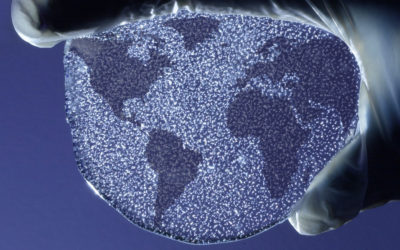
Science strategy
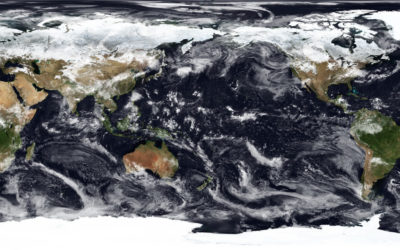
Private: Our Grand Challenges for polar science
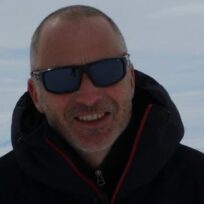
BAS Science Strategy Executive Group
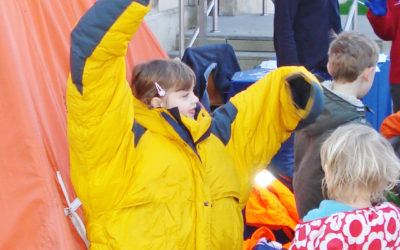
Science and society
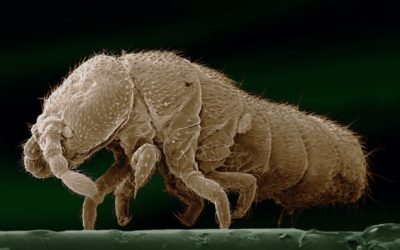
Ecology & biodiversity
